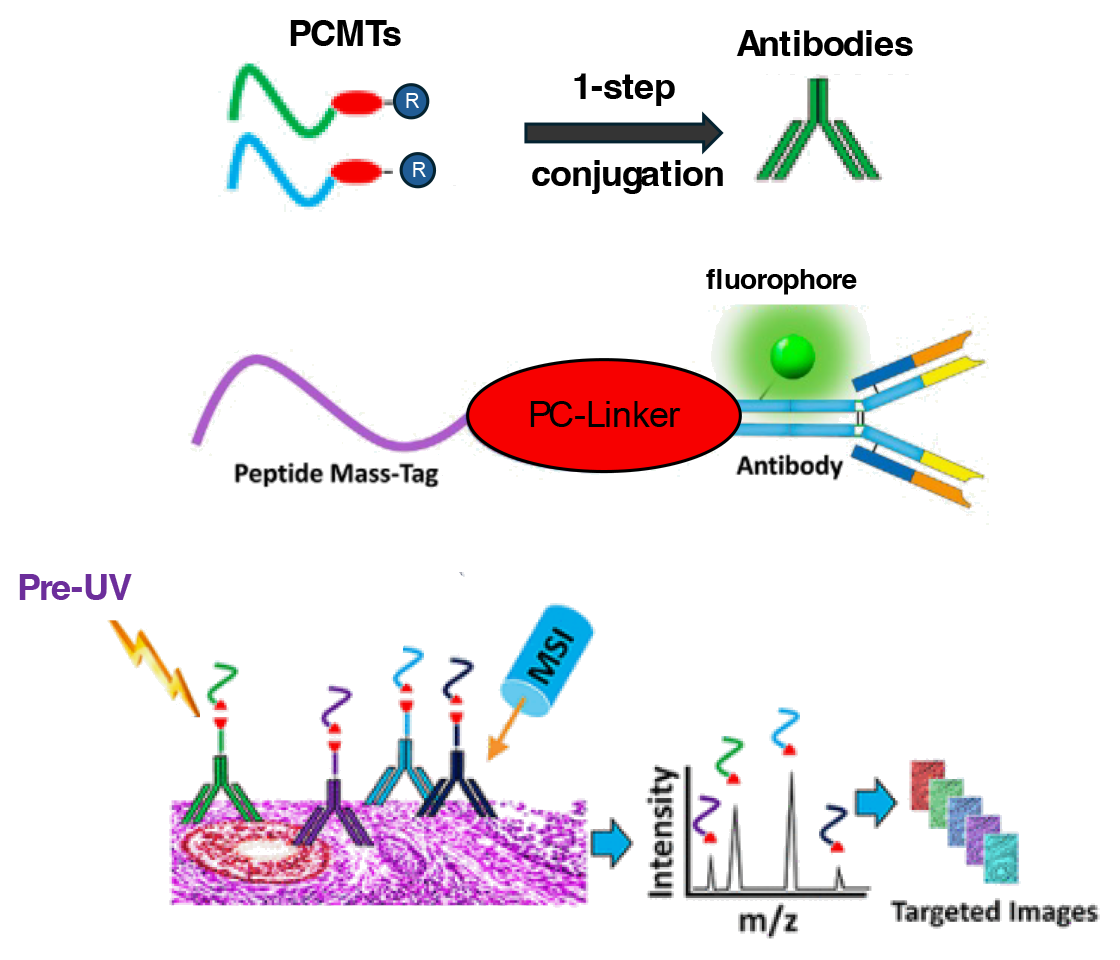A New Platform for Protein Detection
AmberGen’s Photocleavable Mass Tag (PCMT™) Technology
At the heart of AmberGen’s MALDI-IHC platform are its patented photocleavable mass-tags (PCMTs). These mass-tags act as barcodes, which when detected by a MALDI Mass Spectrometer, enable simultaneous imaging of hundreds of targeted intact proteins in a tissue or dispersion of cells. This eliminates the need for iterative cycling required for some high-plex fluorescence imaging platforms.
A key feature of these novel PCMTs is the ability to readily conjugate them to antibodies or other molecular probes in a 1-step high-yield chemical reaction. The resulting Miralys™ antibody probes consist of peptide mass-tags covalently attached through patented PC-Linkers to an antibody with an optional fluorophore for multimodal fluorescence and MALDI imaging on the same sample. Miralys™ antibody probe staining of tissues is accomplished using standard manual or automated immunohistology protocols and equipment. After staining, the tissue is pre-UV photocleaved prior to matrix deposition and MALDI-MSI. Importantly, the photocleaved peptide mass-tag possesses a positively charged amino terminated ion which facilitates MS detection. Detection of each mass-tag ion produces a discrete peak at known m/z in the mass spectrum allowing reconstruction of 2D images of the spatial distribution of the targeted protein in the tissue slice.


